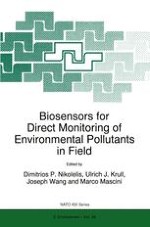Biosensors offer clear and distinct advantages over standard analytical methods for the direct monitoring of environmental pollutants in the field, such as real-time detection with minimum sample preparation and handling. The present book highlights recent advantages that will be of great value to a range of scientists, researchers and students dealing with analytical and environmental chemistry and biosensor technology. It presents recent trends in analytical methodology for the determination of indoor and outdoor pollutants, advances in DNA, biological and recognition-based sensors, examples of biosensors for use in field and water analysis, biosensors based on non-aqueous systems, and recent advances in the miniaturisation and micromachining of biosensors.
